Mitosis: Revolutionizing DeFi with Ecosystem-Owned Liquidity (EOL)

Why Liquidity Mining is Unsustainable ?
Liquidity mining has been a popular way for DeFi projects to attract liquidity. In this model, liquidity providers (LPs) deposit assets into a protocol and receive token rewards in return. While this approach works in the short term, it has major flaws
- Liquidity is temporary – LPs often move their funds to platforms offering higher rewards, leading to unstable liquidity.
- Excessive token emissions – Projects continuously issue tokens to incentivize LPs, which can devalue the token over time.
- Capital inefficiency – Once rewards decrease, liquidity providers withdraw their funds, leaving the protocol vulnerable.
The Solution: Ecosystem-Owned Liquidity (EOL)
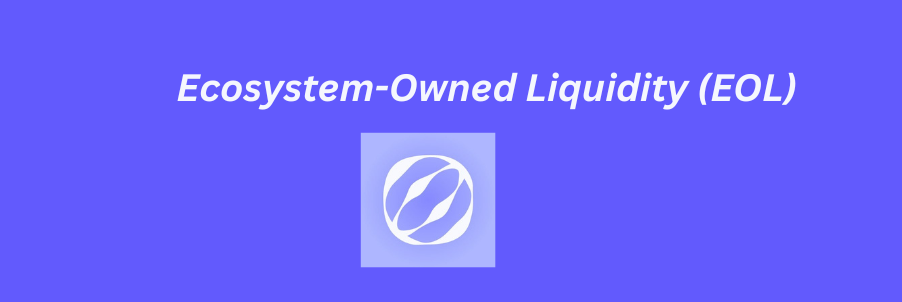
Mitosis introduces Ecosystem-Owned Liquidity (EOL) to solve these problems. Instead of relying on LPs who can withdraw liquidity at any time, Mitosis allows the protocol itself to own and control liquidity.. This ensures greater stability, reduces dependency on external incentives, and enables more strategic capital deployment across DeFi ecosystems. By taking ownership of liquidity, Mitosis helps create a more resilient and self-sustaining financial network.
How EOL Works
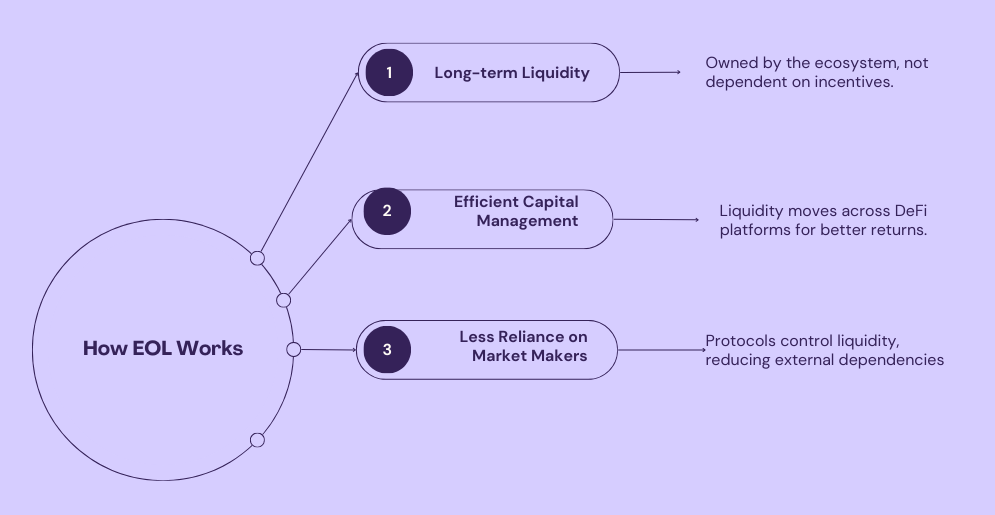
- Long-term liquidity – Since the ecosystem owns the liquidity, it doesn’t disappear when token incentives run out.
- Efficient capital management – Funds can be strategically allocated across different DeFi platforms to maximize returns.
- Less reliance on external market makers – Protocols can sustain themselves without depending on third parties to provide liquidity.
How Mitosis Uses EOL to Improve DeFi
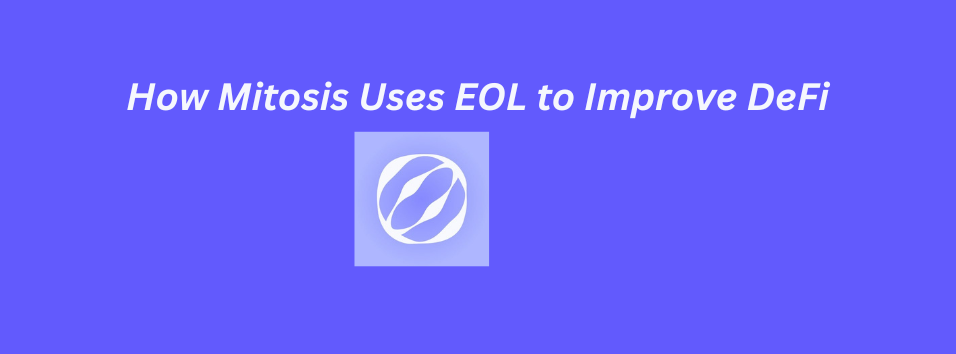
Mitosis creates a decentralized liquidity system that benefits both liquidity providers and DeFi projects:
- Cross-chain liquidity – Funds can move between multiple blockchains efficiently, avoiding liquidity fragmentation.
- Stable, sustainable rewards – Instead of short-term token incentives, LPs benefit from long-term ecosystem growth.
- Greater control for LPs – Liquidity providers participate in governance, influencing decisions on liquidity allocation and protocol development.
EOL vs. Traditional Liquidity Mining: Key Differences
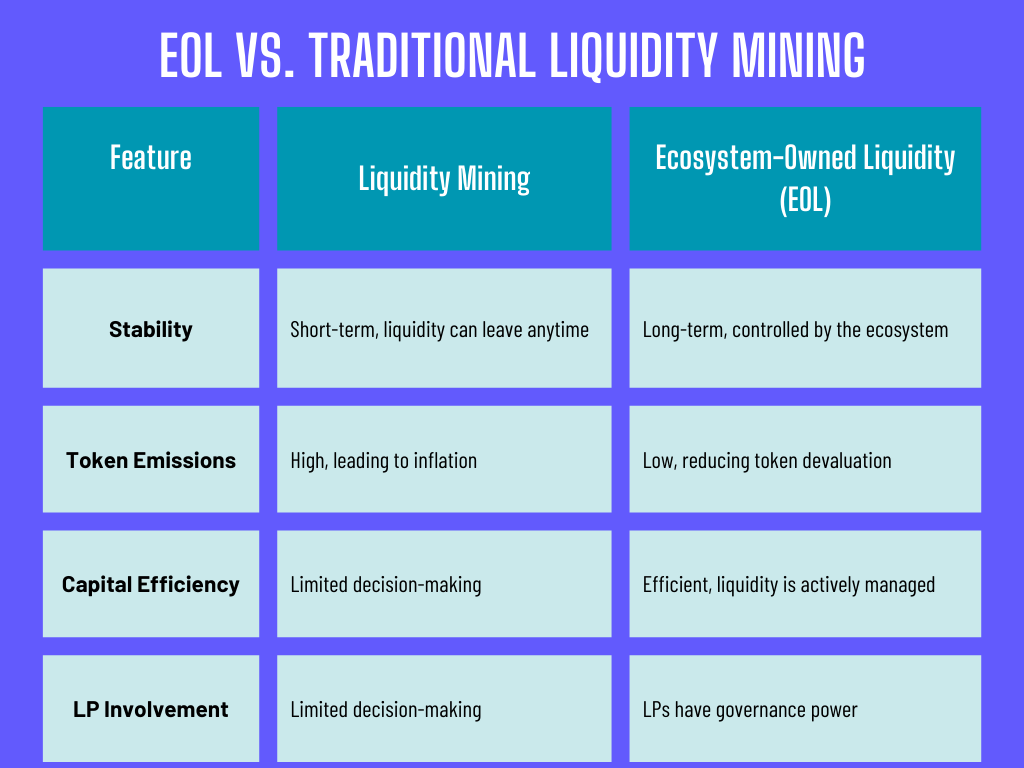
- Liquidity Stability
- Liquidity Mining: Liquidity is short-term, as LPs move their funds to platforms with better rewards.
- EOL: Liquidity stays within the ecosystem, ensuring long-term stability.
- Token Emissions
- Liquidity Mining: Requires constant token emissions, which can lead to inflation and devaluation.
- EOL: Reduces the need for excessive token rewards, preserving the token's value.
- Capital Efficiency
- Liquidity Mining: Inefficient because liquidity is temporary and depends on high incentives.
- EOL: More efficient, as the protocol actively manages and allocates liquidity across the ecosystem.
- LP Involvement
- Liquidity Mining: LPs provide liquidity but have little say in how it’s managed.
- EOL: Liquidity providers participate in governance, helping decide how liquidity is used.
By shifting from traditional liquidity mining to Ecosystem-Owned Liquidity (EOL), Mitosis ensures a more sustainable, efficient, and community-driven approach to managing liquidity in DeFi.
Why EOL is the Future of DeFi
With EOL, DeFi projects no longer have to "rent" liquidity from LPs. Instead, they can own and manage their liquidity, ensuring a more sustainable and self-sufficient financial ecosystem.
Mitosis is leading this shift, helping projects build long-term liquidity solutions without relying on endless token emissions. As DeFi evolves, EOL will become the standard for efficient and stable liquidity management.
Conclusion
Ecosystem-Owned Liquidity (EOL) is a better way to manage liquidity in DeFi. Unlike traditional liquidity mining, which is unstable and costly, EOL allows protocols to own and control liquidity, making it more reliable and sustainable. With this model, projects don’t have to keep giving out rewards, and liquidity providers get better long-term benefits. Mitosis is leading this change, helping DeFi projects create a strong and self-sufficient system. As DeFi grows, EOL will become the smarter and more stable choice for managing liquidity.
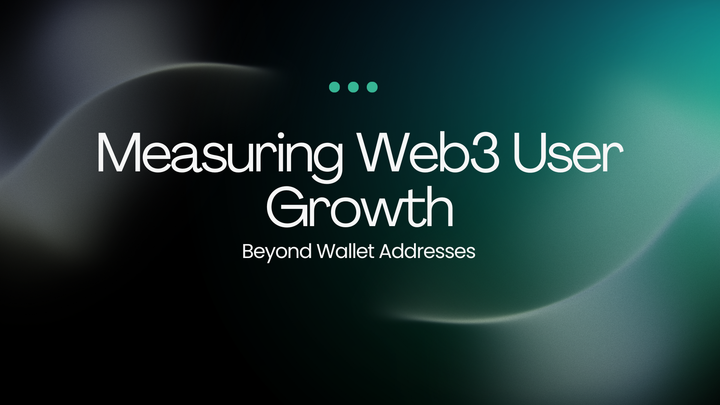
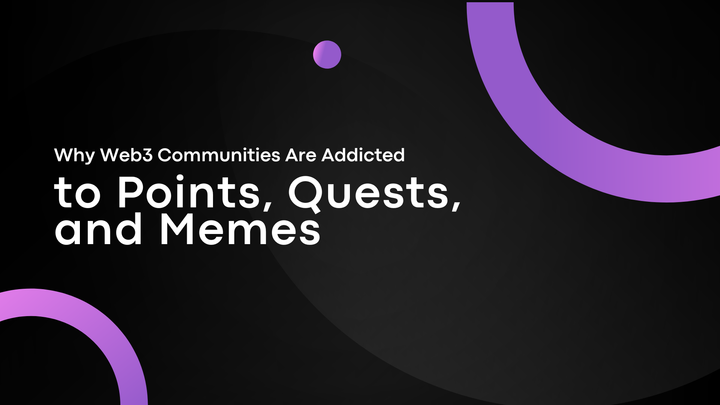

Comments ()